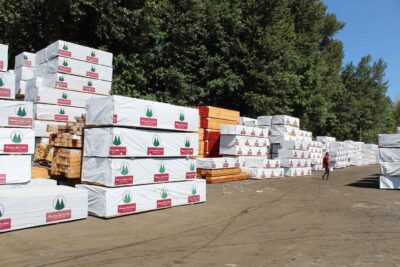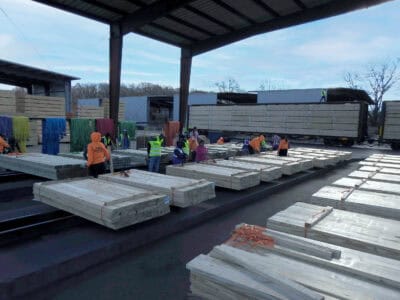With a quieter start to 2024, business continues at this slower pace for many businesses. With spring thaw reducing access to logs, obtaining required inventories is a challenge. With the continued economic global uncertainty and the Bank of Canada keeping its lending rate at 5 percent, business owners are cautious in their dealings, yet remain optimistic a better year will be had.
Ash sales on the domestic front are slow, with demand to China continuing for this species, and all but purchasing most of the production, with exports to European countries reported as down. Green Ash is moving well for most grades and thicknesses.
Due to the weak demand for Cherry, many sawmills are avoiding this species. Green lumber sales, noted some contacts, are more to established customers. It was also noted that prices had trended down in late 2023 but had stabilized lately due to limited production. A similar situation is also reported for kiln dried Cherry. Demand is down except from China. With less production and steady demand from China, prices are firmer.
With demand steady, even though it has not increased much, for the regionally important Hard Maple, lack of supply is keeping markets energized. Contacts note that some color categories and grades are moving better than others, especially the No. 1 and 2 White and Unselected stocks with good color. Upper grades are also selling better than the No. 1 Common, No. 2A, and No. 3A.
Distribution yards and secondary wood products manufacturers are purchasing No. 1 Common and Better Soft Maple. It was noted that production was not keeping pace with demand for upper grades and is only marginally meeting demand for No.1 Common grades. Upper grade prices did show an upward trend.
Hickory demand has contracted, as flooring plants are buying less of this species due to slower sales of finished goods. Flooring manufacturers advised that sales of finished goods had not improved, but they are purchasing to replenish depleted stocks.
Sales of truck trailer flooring is slowing, thus purchases of Oak are reduced, while others have curtailed them at this time. Residential flooring plants say they would like to receive more White Oak, but are controlling receipts of Red Oak.
Sawmills say sales of White Oak are limited more by supply than demand, especially for the upper grades.
Business to export markets for Poplar has improved somewhat since the beginning of the year, although it is far from robust, with upper grades are selling better than the common grades. On the domestic side, demand is fair, with upper grades faring better than the common grades.
Walnut sales are reported as consistent from concentration yards, and prices for the No. 1 Common and Better grades trended higher, with No. 2A prices also on the rise. There is solid interest from distributors and end users in the U.S. and China for this species, with interest expressed from other markets for kiln-dried Walnut.
According to a release in mid-February, a consultation meeting was scheduled between First Nations and the Ministère des Ressources naturelles et des Forêts (MRNF — Ministry of Natural Resources and Forests) as part of the Round Tables on the Future of the Forest. This process was announced in November 2023 by Minister Maïté Blanchette Vézina.
This new initiative by the Quebec government must contain concrete actions and measures that respect the rights and interests of First Nations, comment First Nations. They are inseparable from the future of forests and the forestry activity that derive from it.
“It’s clear that the Quebec government is not doing enough to respect the rights of First Nations on the territory, especially when it comes to logging. The consultations carried out by the MRNF are superficial. Decisions are made unilaterally. Things have to change,” says Lance Haymond, Chief of the Kebaowek First Nation.
Thus, the Assembly of First Nations Quebec-Labrador (AFNQL) reiterates that First Nations hold ancestral rights over their territories and resources. These rights include the right to use and occupy land, to own land, to enjoy economic benefits, and to use and manage their land proactively.
“It’s time the government stopped seeing the forest only as an economic engine for the forest industry. This extremely rich environment and the wildlife that inhabits it are affected by this development, as demonstrated by the situation of the caribou. We need to implement structuring projects to ensure its future, in particular by establishing more protected areas on the territory,” declares Martin Dufour, Chief of the Essipit Innu First Nation.
Consequently, the AFNQL believes that considerable efforts must be made by the Minister, and the government as a whole, to promote conservation of the territory, free, prior and informed consent, co-management of the territory and royalty sharing, as set out in the Lands and Resources Declaration adopted in November 2021 by all the Chiefs. First Nations have repeatedly voiced their concerns and proposed various solutions to address these issues.









